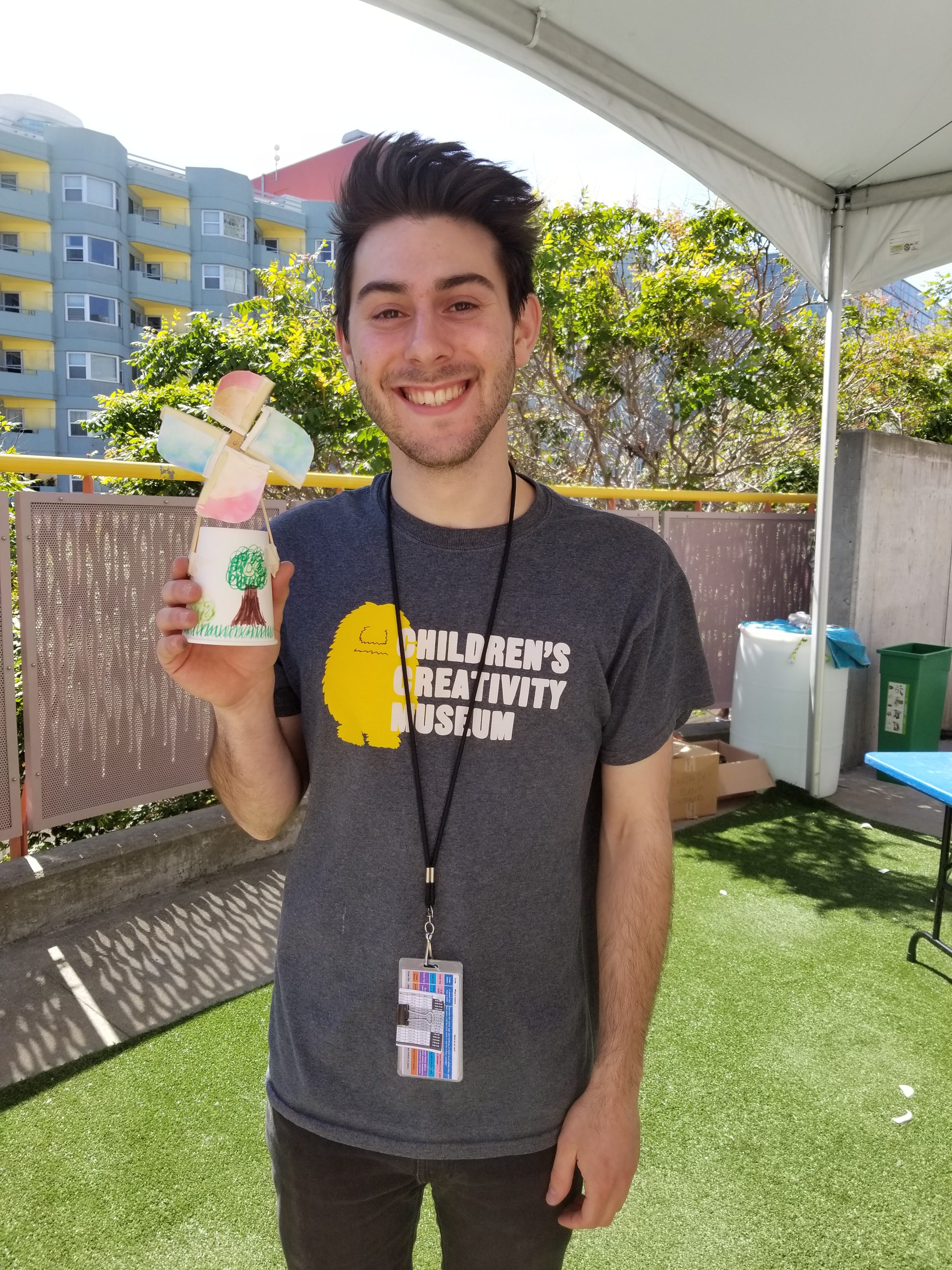![No Child Left Inside By Matt Jorge As a child, the forest in my backyard was so much more than its individual trees, dirt, and babbling brooks. It was the setting of wild and crazy adventures that truly felt alive. A mossy, knotty, felled tree became the long-lost entrance to a secret cave filled with “hidden artifacts” and archaeological […]](https://creativity.org/wp-content/uploads/2019/03/liana-mikah-665141-unsplash-scaled.jpg)
By Matt Jorge
As a child, the forest in my backyard was so much more than its individual trees, dirt, and babbling brooks. It was the setting of wild and crazy adventures that truly felt alive. A mossy, knotty, felled tree became the long-lost entrance to a secret cave filled with “hidden artifacts” and archaeological wonders. A peculiarly shaped stick became a magic wand that would allow me to freeze and unfreeze time. A tarp hanging from limber tree branches became a hideout from bandits. In this forest, my imagination was enabled to run wild! Little did I know that these opportunities for imaginary play outside were actually critical in shaping who I am today.
Exploratory and imaginative outdoor play has a major impact on the overall health and development of children. Multiple scientific studies find that playing outdoors improves creativity and problem-solving skills, academic performance, social relations, physical health, eyesight, self-discipline, and reduces stress in children. In today’s world of omnipresent screens however, this essential outdoor play is in danger of being forgotten.
According to a recent report by Common Sense Media, children under 8 years of age spend an average of 2 hours and 19 minutes a day using screens, and that time only increases as they transition into late childhood and teenage years. You may be thinking, “What is the big difference between screen time and outdoor play? As long as children are having fun, what does it matter?” While it’s true that technology can be quite enriching and exciting for children to explore, there are also many limitations in screen-based activities that we should be aware of.
When children are inside watching television they are passive observers, simply consuming the content in front of them. However, when children are outside creating a game/world using their imaginations or building social skills by being physically active with friends, they are active constructors of their entertainment. Creativity is like a muscle; it needs to be used and practiced to be strengthened. The outside world offers limitless opportunities for children to develop creativity, and offers children the chance to explore important subjects such as science, art, and math in engaging and relevant ways.
The Guardian Early Learning Center in Melbourne actively integrates outdoor exploration  into their curriculum to allow children a chance to explore these subjects. In one instance, older children found a deceased dragonfly which sparked conversations about life cycles and provided opportunities to study the creature up close and personal. Some students were interested in counting and classifying shapes on the dragonfly’s body, while others drew what they saw. Younger children used these expeditions to explore new sensory experiences, such as feeling different types of soil, smelling freshly cut grass, and crunching crisp leaves. Whether children are developing their senses or engaging in discussions and critical thought about the natural world, there is no limit to what can be learned from the outdoors.
into their curriculum to allow children a chance to explore these subjects. In one instance, older children found a deceased dragonfly which sparked conversations about life cycles and provided opportunities to study the creature up close and personal. Some students were interested in counting and classifying shapes on the dragonfly’s body, while others drew what they saw. Younger children used these expeditions to explore new sensory experiences, such as feeling different types of soil, smelling freshly cut grass, and crunching crisp leaves. Whether children are developing their senses or engaging in discussions and critical thought about the natural world, there is no limit to what can be learned from the outdoors.
To be clear, screen time is not inherently “bad”. It is a powerful tool with many educational and entertainment options that can spark rich conversation between parents and children. Furthermore, busy parents may provide children with screen time to give themselves a quick break from their hectic routine! Children should not stop using screens all together, and parents should not feel guilty for allowing their children to interact with technology that is relevant for succeeding in the 21st century. Rather, it is important to be aware of the trend of high technology use amongst children, and to recognize the importance of striking a balance between outdoor play and screen time.
 A healthy dose of nature is essential for children and has been found to positively impact their academic, social, and physical development. Further, spending time outdoors encourages children to be active participants in their play and practice creativity. In a world where screens are everywhere, remembering to build time for your child to play outdoors is key for their development.
A healthy dose of nature is essential for children and has been found to positively impact their academic, social, and physical development. Further, spending time outdoors encourages children to be active participants in their play and practice creativity. In a world where screens are everywhere, remembering to build time for your child to play outdoors is key for their development.
We would love to hear from you, our readers, as well! How does your family find a balance between outdoor play and screen time? What are your favorite memories of playing outside as a child? Share your experiences with the CCM community below & help us learn from one another!
Suggested Outdoor Exploration in an Urban Environment
While you may agree that it is crucial for your children to have opportunities to play and explore outside, it’s not always as simple in an urban environment. Most families do not have access to a private yard in San Francisco or the Bay Area, but there are still many wonderful outdoor opportunities that you and your child can engage in:
- Urban Gardening. Gardening is a simple activity that can get your children
 exploring and feeling around in the dirt, and can be done just about anywhere. Whether you have a miniature garden on your balcony or a few potted plants indoors, allowing children to get their hands dirty can lead to all sorts of fun. It is never too early to talk about how things grow, sustainability, and the importance of plant life on Earth!
exploring and feeling around in the dirt, and can be done just about anywhere. Whether you have a miniature garden on your balcony or a few potted plants indoors, allowing children to get their hands dirty can lead to all sorts of fun. It is never too early to talk about how things grow, sustainability, and the importance of plant life on Earth! - Local Parks and Playgrounds. San Francisco has many local public parks that are perfect for a weekend visit. Families can explore botanical gardens, walking trails, local wildlife, and much more. Here is a link to information about local parks and open spaces from the San Francisco Recreation & Parks organization.
- Explore Your Neighborhood. Neighborhoods, especially in San Francisco, have many deep cultural roots. A great way to learn more about where you live and have fun in nature is to just walk around and explore! Who knows what you’ll find and how you will use it to learn and play.
Scavenger Hunt. While you are out in nature exploring a local park or your neighborhood, consider making a homemade scavenger hunt to do with your kids! A scavenger hunt full of different types of local animals, plants, community members and landmarks is sure to spark fun conversations and lead to quality time with your child.
Resources and Further Reading

Benefits of Connecting Children With Nature ? Click Here
Common Sense Census 2017 Media Use By Kids 0-8 Report ? Click Here
Guardian Early Learning Center Article? Click Here
About the Author
Matt Jorge is an Educator on the CCM team. He has a passion for innovative informal education. He believes that creativity is a highly important skill that should be practiced and celebrated in all learning environments. His main goal in education is to work towards bridging cutting-edge research and everyday practice to help children learn in the most engaging and enjoyable ways. Matt has earned a Master of Education degree in Educational Psychology and a Bachelor of Arts in Psychology from the University of Virginia. Outside of the museum, he loves to play and listen to music. A trumpet player by trade, he now is focusing his attention on dj-ing and exploring digital music creation. In addition to music, Matt enjoys hiking, exploring the Bay Area, animated television shows, and ramen… He really loves ramen.




Leave a Reply